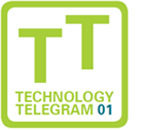10/16/2014 12:51:00 CEST Welded contacts between a battery's individual cells are cheaper and more reliable than screw-on contacts or bimetallic busbars. Therefore, Manz has developed a new welding process for industry. It almost completely stops the molten metal from mixing by laser welding in the overlap using high-frequency local modulation.

High-tech mechanical engineering for the future's growth markets: Electronic Components, Electronic Devices, Solar, and Energy Storage – these are the business segments of Manz. Our expertise is based upon six core technologies: Automation, Metrology, Printing, Laser Processing, Wet Chemical Processing and Vacuum Coating. Today: Our laser expertise as shown by laser welding technology that Manz has developed for lithium-ion battery production.
Welded contacts between a battery's individual cells are cheaper and more reliable than screw-on contacts or bimetallic busbars. However, welding surge arrester contacts made of aluminum and copper is technologically demanding, because the resulting weld seam becomes more brittle the more the two differing metals mix. This often happens with conventional laser welding.
Therefore, Manz has developed a new welding process for industry. It almost completely stops the molten metal from mixing by laser welding in the overlap using high-frequency local modulation, or "wobbling" for short. With wobbling, the depth and width of weld seams are configured in the micrometer range independently of each other. An automatic calibration method Manz has developed for the two-axis scanner system allows wobble frequency up to 4 kHz in continuous operation with constant welding depth to the micrometer and reduced material blemishes at the same time.
Seams produced this way have very high resistance without brittle inter-metallic phases. The connection's cross-section can range from a few tenths of a millimeter to a square millimeter for each millimeter of seam length, even with a low sheet thickness. The newly developed high-frequency modulated overlap welding method also has a beam source with up to 80 percent lower power output. This significantly lowers the cost of the laser system technology.
You can find a detailed description in English of Manz's new wobble technology for bimetallic contacts on lithium-ion batteries and battery housings in the current issue of Laser Technik Journal 4/2014 from the renowned publisher Wiley.
You can learn more about Manz's expertise in laser process technology and lithium-ion batteries here:
